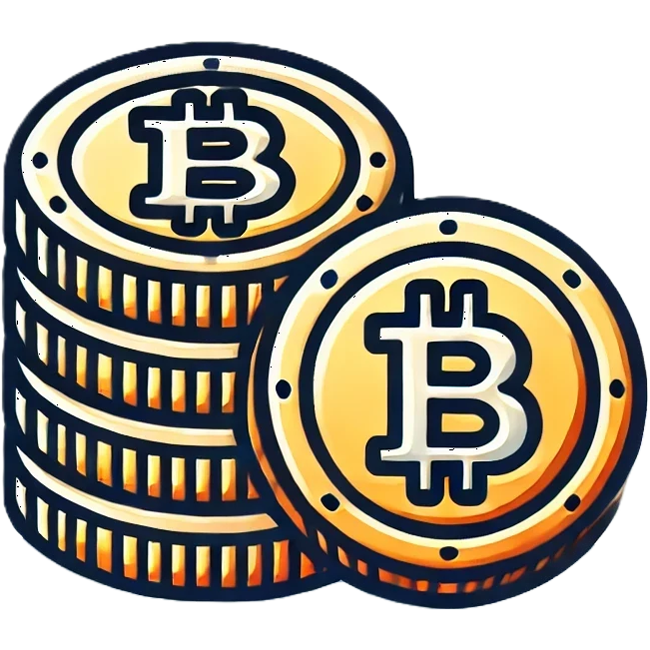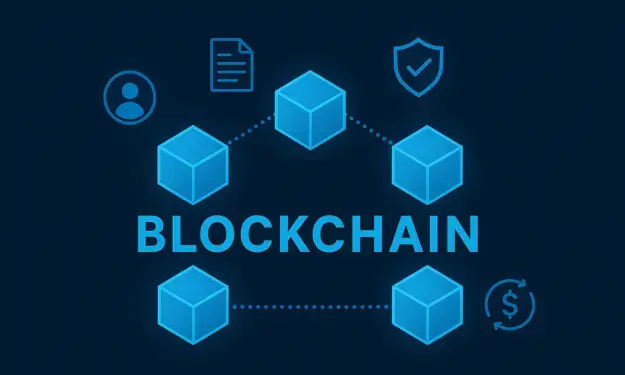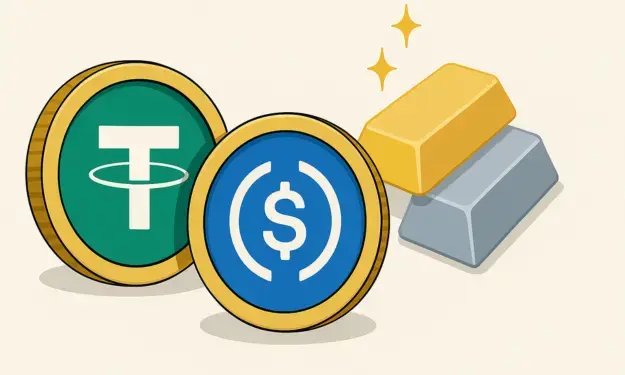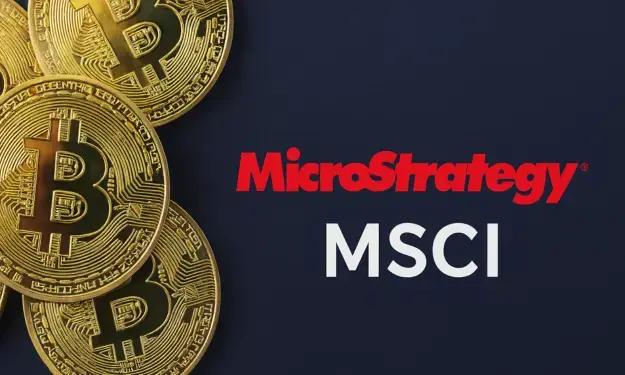Publication date: January 15, 2025
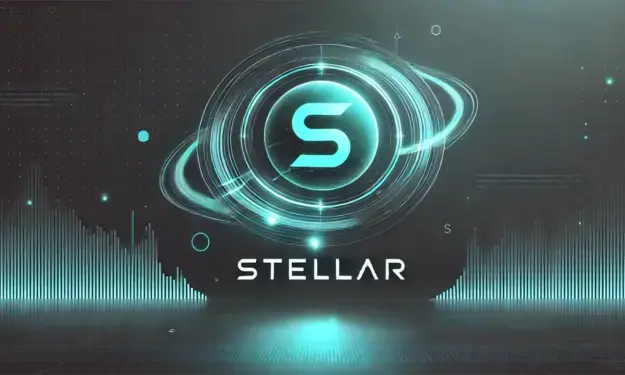
Introduction about the company
Stellar (XLM) was launched in 2014 as an open-source blockchain platform designed to enable fast and cost-effective cross-border payments. Stellar is distinguished by its focus on financial inclusion and partnering with financial institutions, governments, and businesses to modernize traditional payment systems. The platform has earned a strong reputation for its speed, low transaction cost,s and goal of improving economic access for those without access to traditional banking services.
How does Stellar work?
Stellar is a decentralized platform based on blockchain technology using its own cryptocurrency, the Stellar Lumens (XLM). The platform is designed to bridge the gap between traditional financial institutions and digital currencies by connecting fiat currencies and cryptocurrencies. Stellar uses the Stellar Consensus Protocol (SCP), which enables efficient and fast transactions without the energy-intensive mining processes required by proof-of-work (PoW) networks. Transactions on Stellar are processed within seconds, with minimal costs of just a fraction of a penny. The total supply of Stellar Lumens is limited to 50 billion tokens, a portion of which has been allocated to development initiatives and community projects.
History of Stellar
Stellar was founded in 2014 by Jed McCaleb, co-founder of Ripple, and Joyce Kim. The platform was built to make financial services more accessible and simplify cross-border payments. Stellar created the Stellar Development Foundation (SDF) in 2015 to support the adoption and development of the network. The network has since undergone several significant upgrades, including the introduction of the Stellar Core software and the use of SCP as a consensus mechanism. Partnerships with companies such as IBM and financial institutions have further accelerated Stellar adoption.
Recent Developments
In 2024, Stellar achieved a transaction volume of $17.8 billion, thanks in part to a growing number of institutional collaborations and new use cases within the fintech sector. In addition, Stellar is working to integrate smart contract functionality, which will allow the network to offer more opportunities for decentralized financial applications (DeFi). One notable project is working with international banks to issue digital versions of fiat currencies through the Stellar network, further improving the efficiency of cross-border payments.
Currency development Stellar
Stellar has a long history of strong volatility, as is common in the crypto market. In the chart of Stellar (XLM) below, the following three price highs can be identified, along with an explanation of the possible reasons:
1. Early 2018 - First All-Time High around $0.93
- Analysis: Stellar's share price reached its highest point ever in early 2018, around $0.87. This was a period when the entire crypto market was experiencing a surge, driven by massive interest in blockchain technology and ICOs (Initial Coin Offerings).
- Reason: Stellar benefited from the overall bullish market sentiment and its increasing adoption for cross-border payments. Partnerships, such as those with IBM to use Stellar's blockchain in their World Wire project, also contributed to the optimism.
2. Early 2021 - Recovery during the crypto rally
- Analysis: Stellar reached another high in the first quarter of 2021, with a share price of around $0.79. This increase took place in line with the broader rally in the crypto market.
- Reason: The adoption of blockchain technology was reinvigorated by the growth of DeFi (Decentralized Finance) and the popularity of altcoins. Stellar remained an attractive option for cross-border payments and financial inclusion, which increased interest in XLM.
3. End of 2024 - Recent rise to around $0.63
- Analysis: In the final months of 2024, Stellar's share price rose significantly from about $0.10 to a high of about $0.63. This marked an impressive increase of over 600% in such a short period.
- Reason: The rise at the end of 2024 was probably caused by rumors that financial institutions want to use Stellar's blockchain for digital central bank tokens (CBDCs). In addition, there was optimism about new features, such as smart contracts, making Stellar more attractive. Also, the broader revival of the crypto market and Donald Trump's win in the U.S. presidential election created confidence among investors, which contributed to XLM's growth.
These three highlights reflect the volatility of the crypto market, which involved both market-wide trends and specific developments within the Stellar ecosystem.
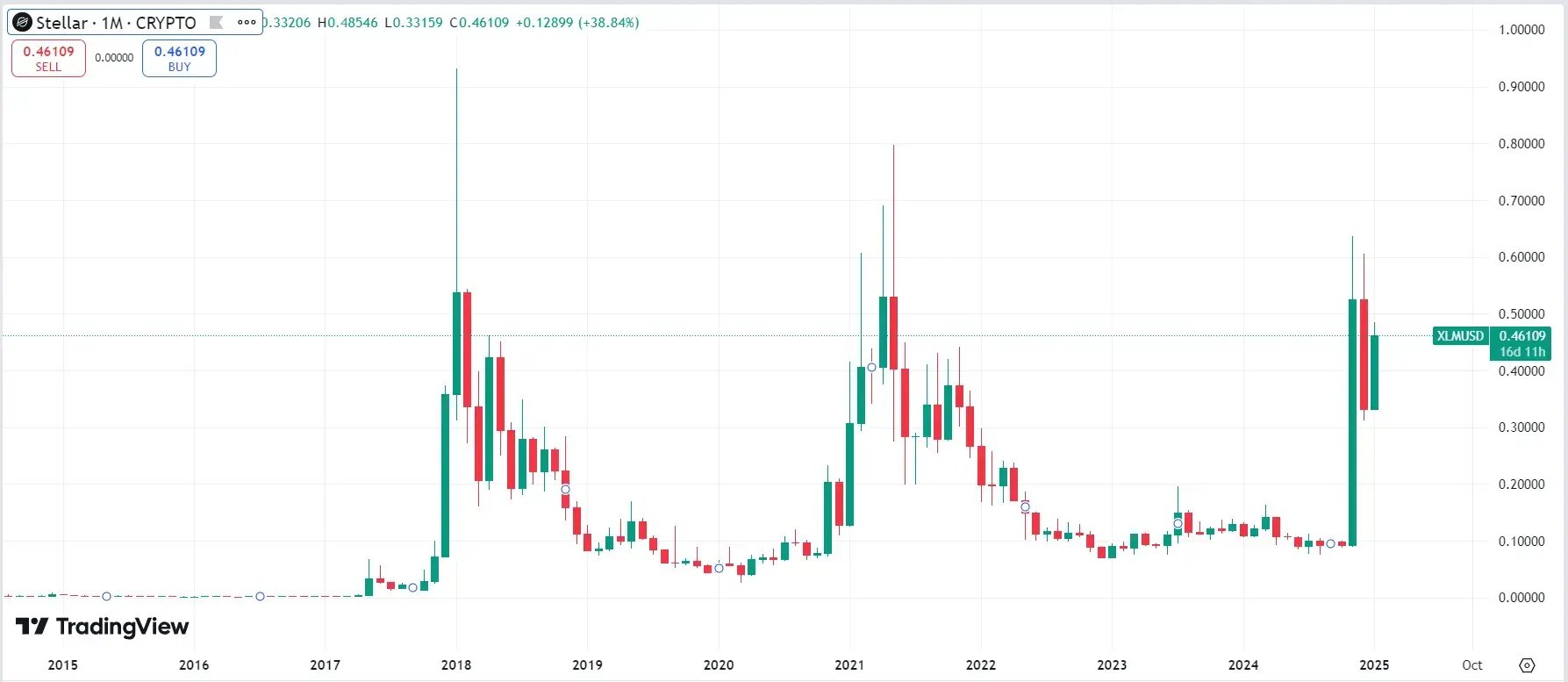
What could drive up the price of Stellar?
1. Adoption by financial institutions: New partnerships with banks and companies using the Stellar network could increase the value of XLM.
2. Technology improvements: The introduction of smart contracts and other upgrades could make the ecosystem more attractive to developers and users.
3. Institutional interest: Collaborations such as those with IBM strengthen Stellar's credibility and attract institutional investors.

.svg)




